Search results for: 'Stone to'
-
 Polished stone age axe head
Polished stone age axe headThe small tool from the younger Stone Age has a nicely polished surface revealing the beautiful black stone it is made of. Approx. 4200 to 2400 BC.
Price: on request Small axe head from the New Stone Age
Small axe head from the New Stone AgeCompact stone axe from the 3rd Millenium BC. Found on the Danish island of Moen.
Price: on request Stone Age chisel from Northern Germany
Stone Age chisel from Northern GermanyAsymmetrically shaped chisel with two polished sides. Made of light flint. Approx. 3400 to 2400 BC.
Price: on request Stone Age bow scraper from Egypt
Stone Age bow scraper from EgyptThe Paleolithic tool is of beautiful shape and color. Thebes has been handed down as the place of origin. Including old museum display.
Price: on request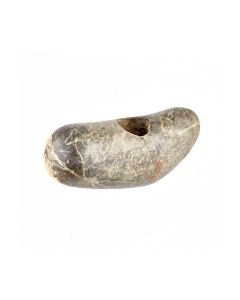 Finely polished hammer axe
Finely polished hammer axeThe compact axe head is made of beautiful and polished green-black stone with white veins. Late Neolithic to Copper Age.
Price: on request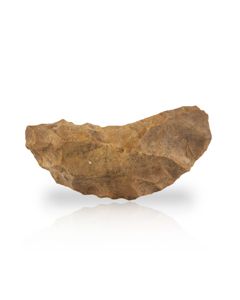 Stone Age bow scraper from Egypt
Stone Age bow scraper from EgyptThe Paleolithic tool is shaped like a sickle. Thebes has been handed down as the place of origin. From a 100 year old museum collection.
Price: on request Stone Age bow scraper from Egypt
Stone Age bow scraper from EgyptThe Paleolithic tool is of beautiful shape and color. Thebes has been handed down as the place of origin. From an old museum collection.
Price: on request Stone Age spearhead from North America
Stone Age spearhead from North AmericaFinely crafted flint projectile from the Stone Age of North America. From a swiss museum collection.
Price: on request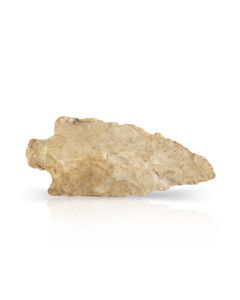 Stone Age spearhead from North America
Stone Age spearhead from North AmericaFinely crafted flint projectile from the younger Stone Age of North America. From a swiss museum collection.
Price: on request Stone Age spearhead from North America
Stone Age spearhead from North AmericaFinely crafted flint projectile from the Stone Age of North America. From a swiss museum collection.
Price: on request Stone Age spearhead from North America
Stone Age spearhead from North AmericaFinely crafted flint projectile from the Stone Age of North America. From a swiss museum collection.
Price: on request Small Stone Age axe made of rock
Small Stone Age axe made of rockThe tool with finely polished blade is of the point-butted type. From the Stone Age of western Europe.
Price: on request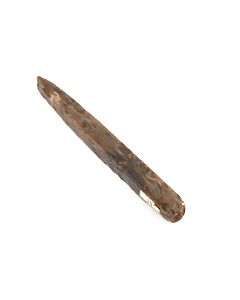 Neolithic chisel from Northern Germany
Neolithic chisel from Northern GermanyElegantly shaped chisel with two polished sides. Made of dark flint. Approx. 3400 to 2400 BC.
Price: on request Neolithic axe head
Neolithic axe headFinely crafted tool made of nice dark grey flint. From the New Stone Age of Europe. A specimen of the thick butted type with thin blade.
Price: on request Neolithic axe head
Neolithic axe headFinely crafted tool from the New Stone Age of Europe. A specimen of the thick butted type.
Price: on request Neolithic axe head
Neolithic axe headNicely crafted tool made of beige stone. From the New Stone Age of Europe. A specimen of the thick butted type with thin blade.
€245 Flint knife from Northern Germany
Flint knife from Northern GermanyFlat two-edged stone blade from the Dagger Period of Northern Europe.
Price: on request Neolithic axe head
Neolithic axe headThe strong blade was probably used for a battle axe. Crafted from grey rock. An artefact from the Neolithic Age of Europe.
€490 Neolithic axe head from Luetzow in Northern Germany
Neolithic axe head from Luetzow in Northern GermanyPolished axe made of beautiful brown flint. It was found more than 100 years ago near the town of Luetzow.
Price: on request Three neolithic arrowheads from Egypt
Three neolithic arrowheads from EgyptThe Stone Age points are beautifully crafted, with finely serrated edges. From a 100 year old museum collection.
Price: on request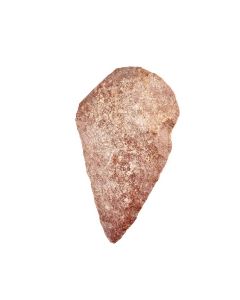 Paleolithic hand axe
Paleolithic hand axeThe universal tool of the older Stone age. It could be used as a borer or a cutter. Approx. 500,000 to 200,000 BC.
Price: on request Hand axe from Galilee
Hand axe from GalileeBig paleolithic hand axe. The universal stone age tool could be use as a borer or cutting tool. Around 500,000 to 200,000 BC.
Price: on request Three neolithic arrowheads from Egypt
Three neolithic arrowheads from EgyptThe Stone Age points are beautifully crafted, with finely serrated edges. From a 100 year old museum collection.
Price: on request Neolithic flint dagger from Denmark
Neolithic flint dagger from DenmarkDouble-edged blade and flat shaft made of beautiful flintstone. A status symbol from the transitional period between Late Neolithic and Early Bronze Age.
Price: on request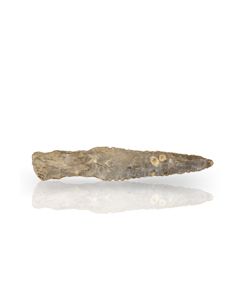 Neolithic flint dagger from Denmark
Neolithic flint dagger from DenmarkDouble-edged blade and flat shaft made of beautiful flintstone. A status symbol from the transitional period between Late Neolithic and Early Bronze Age.
€650 Neolithic flint dagger from Denmark
Neolithic flint dagger from DenmarkDouble-edged blade and flat shaft made of beautiful flintstone. A status symbol from the transitional period between Late Neolithic and Early Bronze Age.
€480 Neolithic dagger blade from Denmark
Neolithic dagger blade from DenmarkDouble-edged, pointed blade made of beautiful flint. The blade was for a dagger, the typical status symbol from the transitional period between Late Neolithic and Early Bronze Age.
€480 Neolithic dagger blade from Denmark
Neolithic dagger blade from DenmarkDouble-edged, pointed blade made of beautiful flint. The blade was for a dagger, the typical status symbol from the transitional period between Late Neolithic and Early Bronze Age.
€470 Paleolithic hand axe of Homo Erectus
Paleolithic hand axe of Homo ErectusBig hand axe from Niger. Made during the Old Stone Age, around 200,000 years ago. The universal stone age tool could be use as a borer or cutting tool.
Price: on request Neolithic sickle from Denmark
Neolithic sickle from DenmarkCrescent-shaped blade made of beautiful brown flint. This tool represents an intermediate state within the radical transition from Neolithic to Bronze Age.
€700 Neolithic flint sickle from Denmark
Neolithic flint sickle from DenmarkCrescent-shaped blade made of beautiful brown flintstone. This tool represents an intermediate state within the radical transition from Neolithic to Bronze Age.
€530 Neolithic flint sickle from Denmark
Neolithic flint sickle from DenmarkCrescent-shaped blade made of beautiful reddish-brown flintstone. This tool represents an intermediate state within the radical transition from Neolithic to Bronze Age.
€520 Large paleolithic hand axe
Large paleolithic hand axePrehistoric stone tool made of wonderfully banded stone. It was the universal tool of the older Stone age and could be used as a borer or a cutter. From a Swiss museum collection. Found in Morocco, North Africa.
Price: on request Neolithic axe head
Neolithic axe headFinely crafted tool from the New Stone Age of Europe. A specimen of the thin butted type.
Price: on request Powerful and heavy work axe
Powerful and heavy work axeRare and impressively large and heavy tool from the New Stone Age. The axe type comes from Jutland, Denmark.
Price: on request Large Paleolithic hand axe
Large Paleolithic hand axePrehistoric stone tool. It was the universal tool of the older Stone age and could be used as a borer or a cutter. From a Swiss museum collection. Found in Foggaret Ezzaouia, Algeria, North Africa.
Price: on request

